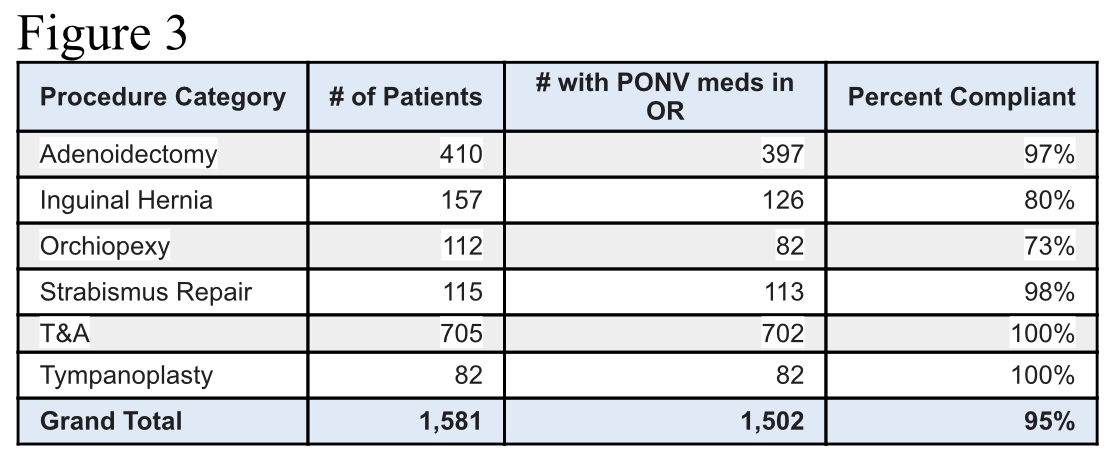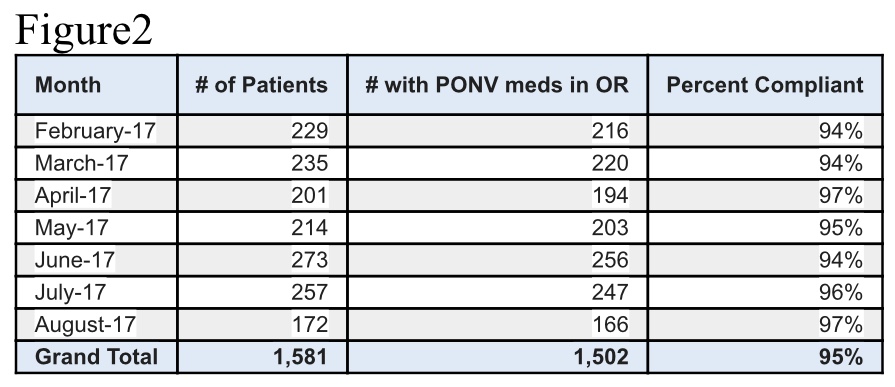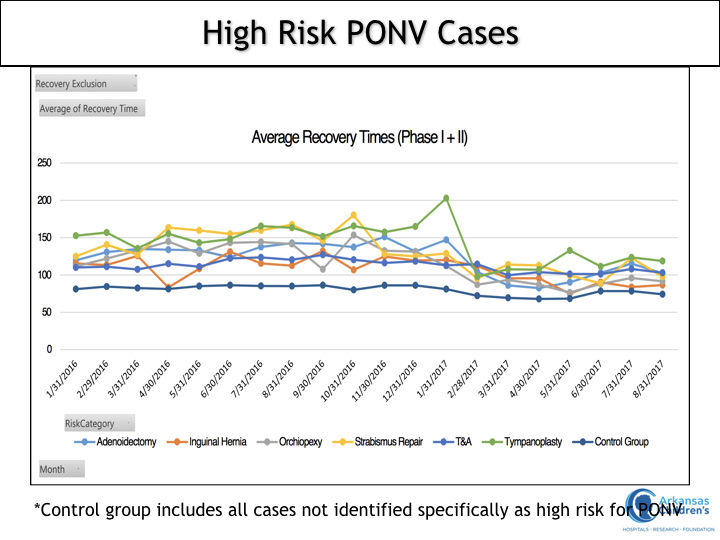NM-222
Decreasing the incidence of unplanned admission secondary to PONV: A quality improvement project.
1Willett O, 2Jesus A, 3Aunspaugh J
1University of Arkansas of Medical Sciences - Arkansas Childrens Hospital, Little Rock, Arkansas, United states; 2University of Arkansas of Medical Sicences - Arkansas Childrens Hospital, Little Rock, Arkansas, United states; 3University of Arkansas of Medical Sciences - Arkansas Children's Hospital, Little Rock, Arkansas, United states
Introduction:
This is a phase 2 of quality improvement project on PONV prevention that was initiated at our institution in response to increased number of unplanned postoperative admissions. During phase 1 appropriate intraoperative administration of antiemetic medications on high risk patients had been evaluated. It was concluded that patients were not administered proper antiemetic prophylaxis. Guideline for PONV prophylaxis was implemented on February 2017. The global aim of this project was to determine the percentage of compliance with implemented guideline.
Methods:
Retrospective chart review was done on the following high risk patients: Adenoidectomy, Tonsillectomy, Tympanoplasty, Inguinal hernia repair and Orchiopexy. Utilization of the following antiemetics was recorded: Dexamethasone, Ondansetron, Diphenhydramine, Metoclopromide and Promethazine. Intraoperative and postoperative administration of these antiemetics was evaluated during the seven month period. Number of unplanned admissions and prolonged recovery time in PACU due to PONV were also recorded.
Results:
Total number of the patients at risk of PONV for the studied period was 1581(figure2). There was only one patient admitted due to PONV after the implementation of the PONV guideline. Average recovery times were reduced, but did not differ among the high risk PONV groups by procedures (figure 1). The percent compliance with administration of antiemetic medications was 94-97% range. The compliance was highest for the patients undergoing tonsillectomies, adenoidectomies and tympanoplasties and lowest for Inguinal hernia repairs and orchiopexies (Figure3).
Discussion and Conclusion:
We have observed reduced number of unplanned admissions due to PONV after implementation of PONV guidelines. 6% decrease in Phase1 and 2 recovery times was observed as well. Based on our results compliance needs to be improved on patients undergoing inguinal hernia repair and orchiopexy.
Top














